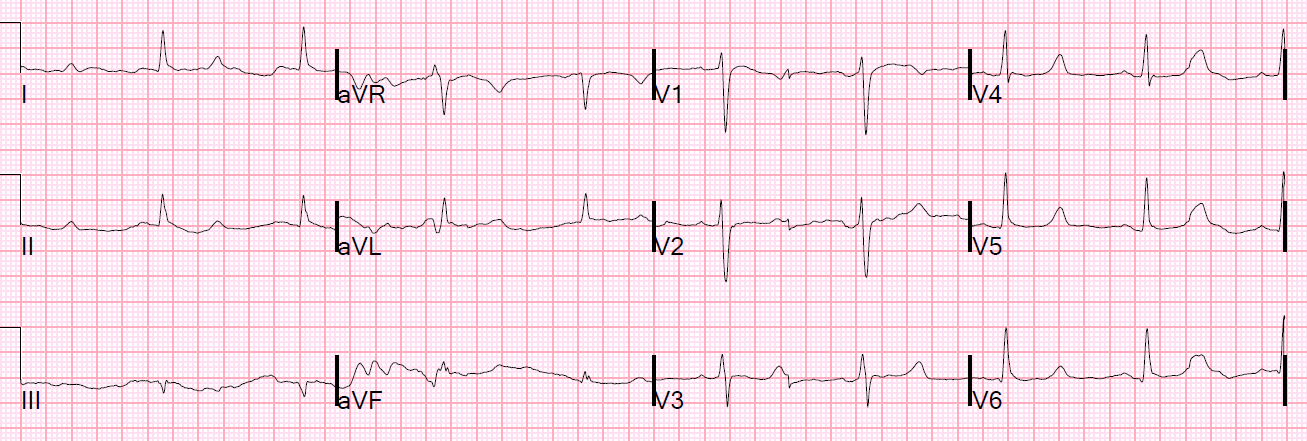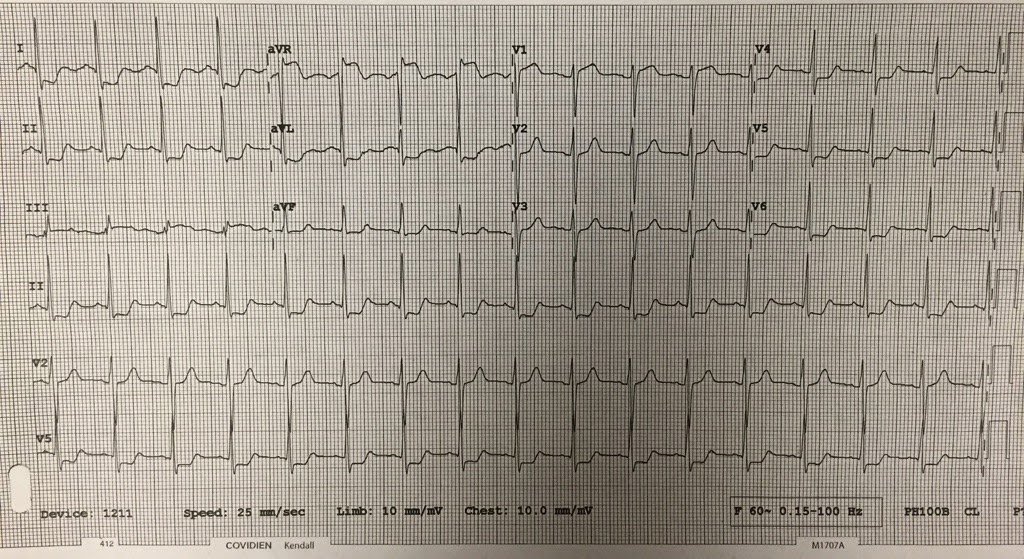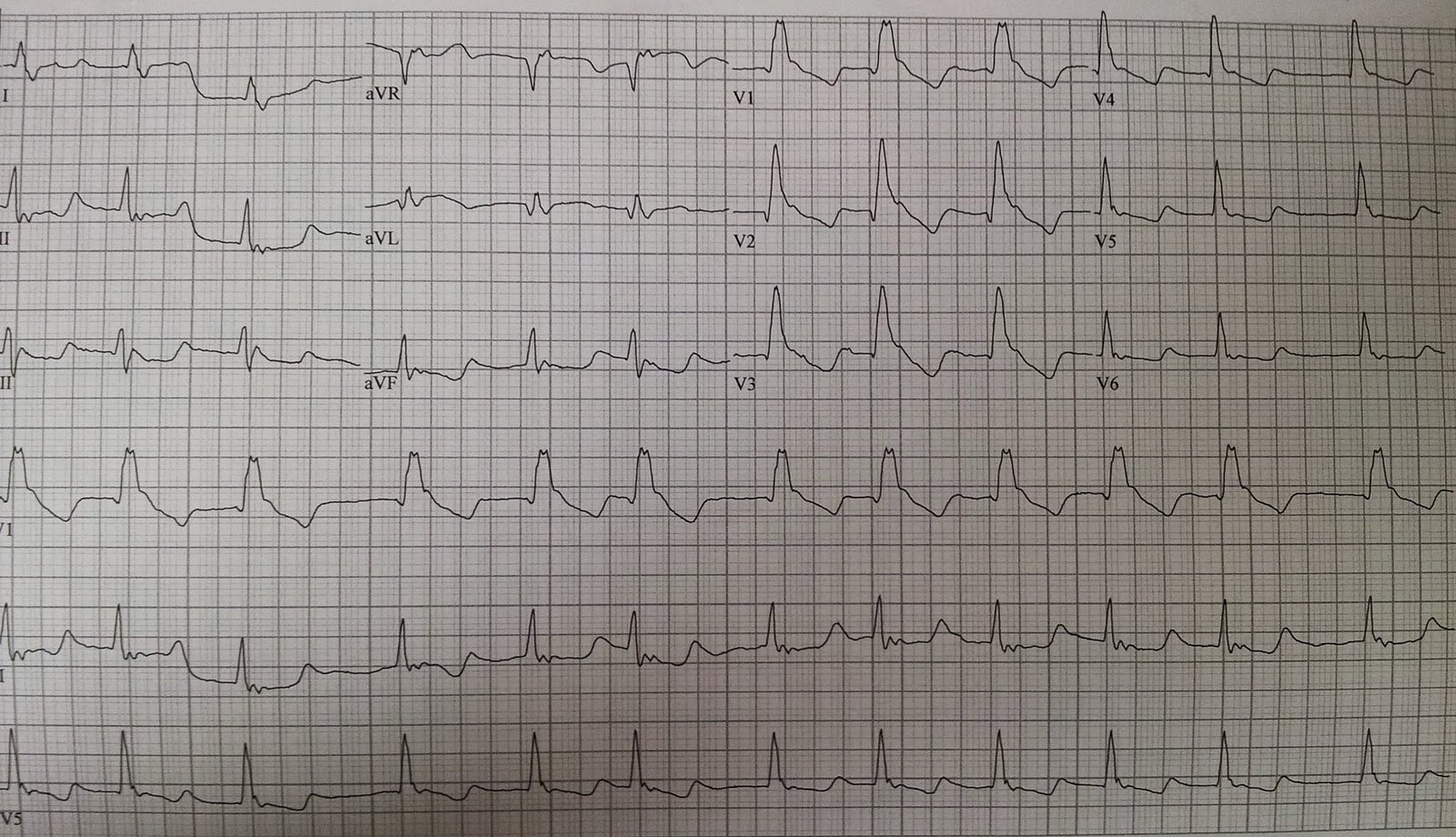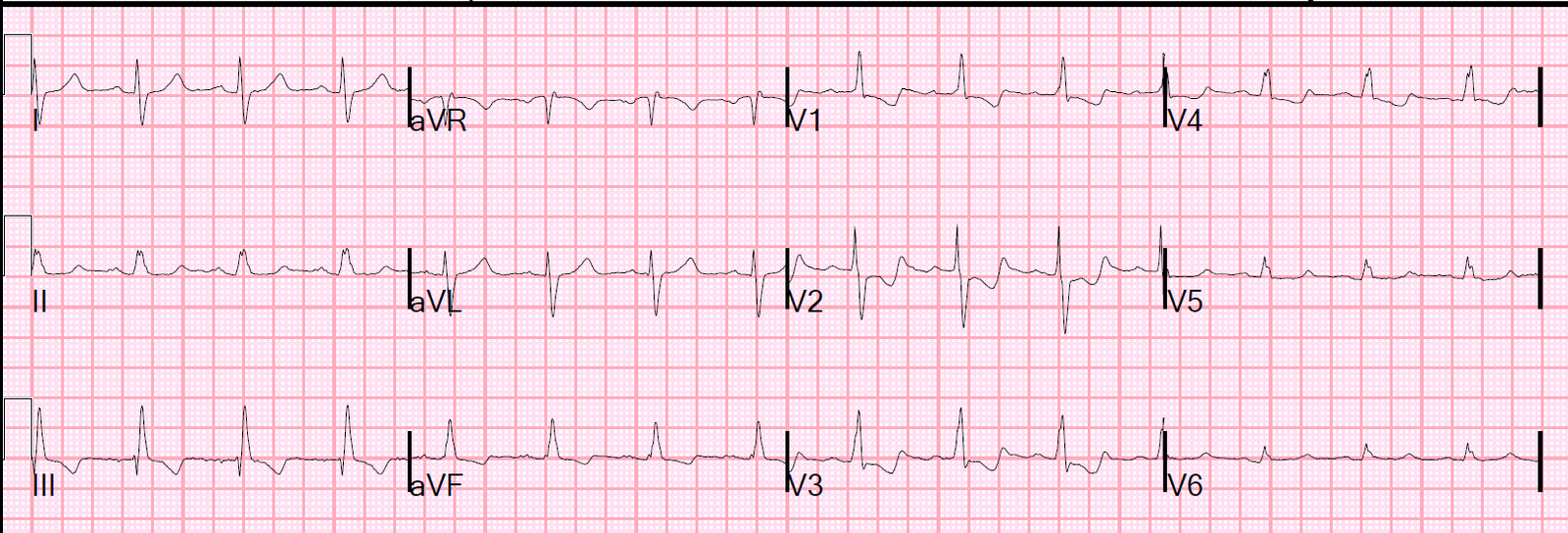I saw these two cases on the same day.
This patient had a GI bleed and a massive transfusion:
 |
| What is it? |
This patient had a history of “frozen shoulders,” and had been treated for this elsewhere for quite a while. He had been seen in the ED 6 days prior for increased shoulder pain, and was referred back to his orthopedic clinic. He had this ECG recorded because shoulder pain can be a symptom of ACS:
 |
| What do you notice? |
The first case has a very long ST segment and thus long QT. This is classic for hypocalcemia; the ionized calcium was 3.0 mEq/L. This is a common complication of massive transfusion. One must be vigilant for hypocalcemia.
The second case shows a very short QT with short ST segment. The computer measured it at 354 ms. This was a tipoff to hypercalcemia and so we suspected that this patient had cancer as the etiology of his pain. A chest x-ray (which we were going to get anyway) confirmed a chest mass. A chest CT confirmed this and also showed otherwise occult spread to the shoulders. The ionized calcium was 7.32 mg/dL and the total calcium was 15 mg/dL.
Here was the ECG after normalization of Ca in the second (hypercalcemia) case:
 |
| The QTc is now 384 ms |




Hypocalcemia typically produces the "tent sign" at the end of the desert (ie, relatively normal but prolonged ST segment followed by an otherwise unaffected T wave) – which is precisely what the TOP ECG shows. Hypocalcemia often accompanies hyperkalemia – so that T wave at the end of the long ST may be peaked in renal failure patients with both abnormalities.
ECG-2 is a beautiful example of that short-Q-to-peak-of-T interval seen with hypercalcemia. Having looked for examples of Hypercalcemia on ECG over a period of ~ 3 decades while I was attending (and religiously checking serum Ca++ levels whenever I suspected this finding) – it is not common to see (and be able to recognize) hypercalcemia on ECG in my experience. In those cases in which I could – serum Ca++ levels were almost always quite elevated (ie, ≥13 mg/dL range) – as they were for the above example.
NICE case!
The T wave is bizarre in the first one like there was a hidden P wave. AVblock?
Okay, I am stumped but very curious on how these two cases are related. Can you give any tips, Dr. Smith?
Olivier,
My inclination is to attribute it to artifact, of which there is quite a bit on this ECG.
Steve
Thanks, Ken!
Only that both are related to calcium: hyper- and hypocalcemia.
Thanks for this, very interesting. I got the long QT but not the short.
At what point would you say QTc is pathologically short and check the calcium?
I also thought there are some additional p waves in top tracing, possibly 2:1, but as you say difficult to see with the artifact and no rhythm strip.
The ACC says that any corrected QT less than 390 is short.
http://content.onlinejacc.org/article.aspx?articleid=%201139533
I would guesstimate that one should be particularly worried if less than 375
Steve